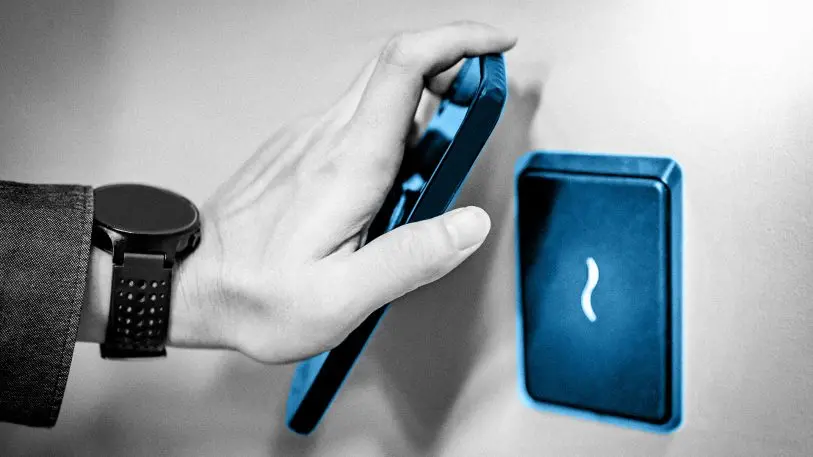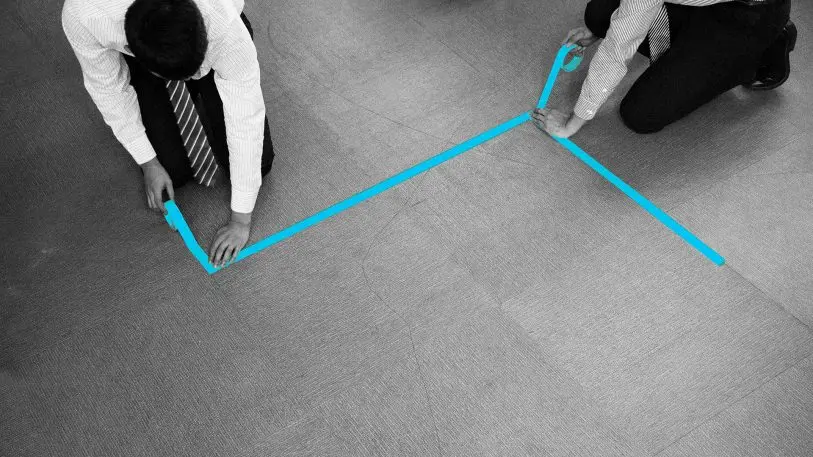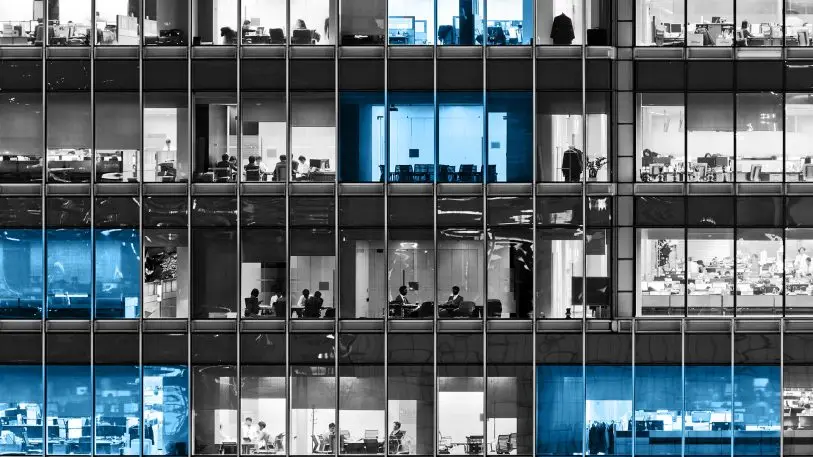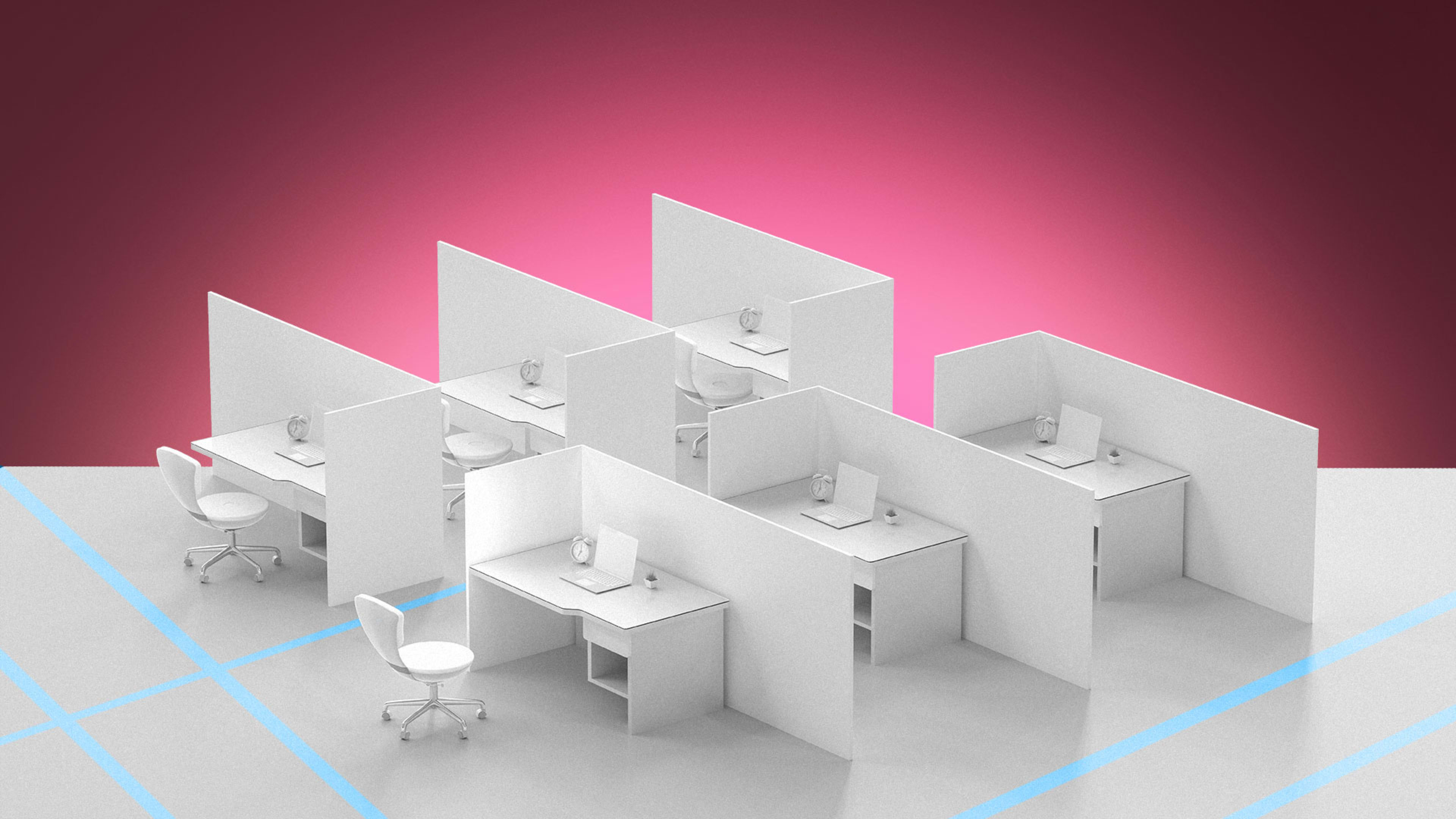Millions of Americans are now starting to think about going back to work, but it won’t be the same experience as before. Not only will work spaces look different, but many building managers and companies will have put in place technologies to detect sick people, enforce social distancing, and reduce the need to touch surfaces.
Much of this technology has been around long before COVID-19, but its adoption will accelerate as health and safety become primary business concerns. Unfortunately, privacy violations might come with it, too. Here’s a breakdown of the technology that employers may roll out to keep you healthy when you return to your office.
On your first day back
It’s early Monday morning on the day that your office finally reopens, but you’re not sure if you will work from home or go in yet. You open up your company’s workplace app, which provides a sort of hub where you can find information and access work resources.
You might notice that your company now wants you to report your whereabouts. The app may prompt you to indicate if you’re working remotely, and it may ask you to opt in to having your location logged automatically when you enter the office and connect to Wi-Fi. Some companies might require employees to log in before they can use meeting rooms.
That’s partly to keep business running smoothly when many workers are no longer in the office on a given day. But many companies will also become keenly aware of how much office space they’re actually using, and how much they really need. In addition, they may use the app as a means of contact tracing. If you get sick, or you’re exposed to someone in the office who tests positive, suddenly your location becomes a prime concern. You may be asked to self-quarantine. There may also be liability issues for the company if you got sick on the job. (In most states, however, an employee would have to prove they caught the virus at work to collect damages.)
Some companies may put their employees on staggered office schedules to prevent overcrowding. Others will leave it up to employees to come into the office or not, provided they indicate where they’re working. (Madrona Venture Group compiled a useful tool kit, including a series of videos for companies reopening offices.)
Your workplace app tells you the office is expected to be less than half full today. When you return to work, you may no longer have a permanent desk. Many more employees will likely use hotel desks. An integration with workspace reservation platforms like AgilQuest or Condeco might allow the app to help you book a temporary desk at the office for the day. You might be concerned about the cleanliness of the workspace, so you check the app to see when the cleaning crew last disinfected it. The cleaning crew might use a phone to scan a QR code posted at the workspace to tell the workplace management system the space is clean.

From the lobby to the elevator
When you arrive at work, you’re a little nervous about touching anything, since the virus can live for hours or even days outside a host. But you might find that it’s possible to do a growing number of tasks during the day without having to touch any public keypads. Instead, you can use your phone. “The phone now becomes your personal touch pad for things like elevators, or conference room technology,” says Doug Stewart, the head of smart building and workplace technology at the real estate services firm Cushman & Wakefield.
Doug StewartThe phone now becomes your personal touch pad for things like elevators, or conference room technology.”
In more technologically advanced workplaces, you may be able to use your phone in the same way you might use a fob or keycard. After you key in, the front door may automatically open so that you don’t have to touch it.
Once you’re in the lobby, you might see thermal cameras around, perhaps situated near the security cameras. These thermal cameras will be scanning faces, looking for elevated skin temperatures, which they will then report to the security desk. (The CDC offers guidelines for both companies returning to office spaces, and for building managers reopening office buildings.)
The Food and Drug Administration, recognizing that thermal cameras could be a useful tool in dealing with coronavirus, recently loosened its requirements to allow for the sale of less expensive thermal cameras and provided new minimum guidelines for what the devices should do. These sub-medical-grade cameras have questionable accuracy—they weren’t originally designed to detect body temperature—but they still may be a useful frontline detection tool in office spaces, says Ryan Lee of the engineering consulting firm H. Stephen Jones & Associates. Thermal cameras are expected to become a $2 billion market this year.
For visitors, many companies will likely require a temperature check—either passively with thermal cameras or more actively using thermometer “guns,” which use infrared light on the forehead at close range to determine skin temperature. These devices, which can be bought for less than $100, are commonly used even in hospitals, Lee says, but nobody believes them to be highly accurate. However, they too can be used as a first line of testing, where any positive result could be followed by another test using a more accurate technology.
Visitors to the building likely won’t be asked to touch a pen to sign in. The building management may have invested in a new kiosk system that records the visitor’s face, then spits out something like a paper boarding pass that the person can use as a keycard all day.
Some buildings will invest in touchless turnstiles that open when you pass your building card or your smartphone close to a sensor panel. Turnstiles may only open for people who have already proved to a thermal camera or thermometer gun that they’re not running a fever.
The next step in your journey is the elevators, which present more challenges to virus safety.
The next step in your journey is the elevators, which present more challenges to virus safety. Ideally, the building management will have converted its elevators to touchless control, but that upgrade can run $150,000 for each elevator car, says Mike Gleason, the director of digital workplace at the IT consulting firm Netrix. Some elevator companies are looking at ways to allow people to control cars using their smartphones. But, Gleason says, putting the “keys” to parts of the building inside a personal device adds some security risk.
An even more serious issue is social distancing. Many buildings will allow only four people at a time to ride in an elevator. There may be high-tech approaches to enforcing this, but some buildings might end up paying an elevator attendant to regulate rider numbers and push the buttons for the floors. This could cause serious problems in big buildings where thousands of employees normally show up at 9 a.m. to go to work.

An office divided
You’re off the elevator and approaching your office suite—another access point you don’t want to touch. You might again use your smartphone to transmit your credentials to the building management system to gain entry.
When you finally walk into your office space, you may not recognize it. Your company, like many others, will likely have completely rearranged the place to facilitate social distancing.
When you finally walk into your office space, you may not recognize it.
There are high-tech approaches to maintaining social distancing in the office, but chances are that you’ll see mainly low-tech ones in your first days back. Especially in small- and medium-size companies, you’re likely to see tape on the floor directing traffic flows and marking off social distance. Desks might be spaced farther apart. You may see lots of plexiglass dividers and signage on the walls that will remind you of the very different world we’re living in now.
The more high-tech approaches are currently being tested, but they may be too privacy-invasive to sit well with employees. Ford Motor Company, for instance, is asking a small number of its manufacturing floor employees to wear wrist wearables that buzz when the wearer gets too close to another worker. Landing AI uses computer vision technology to analyze real-time security camera footage and detect when bodies are too close together. Motorola’s Avigilon subsidiary and San Mateo, California-based Camio are also working on systems that use video analytics to detect social distancing and mask violations in the workplace, as my colleague Jared Newman reports.
https://www.youtube.com/watch?v=15iIV1Lff-M&feature=emb_title
Even going to the restrooms will change. Having 10 people in the restroom at once will no longer be allowed. Some companies might use cameras with analytics software to detect the number of people in a restroom at one time, then take some action when capacity is reached. “So think about an airplane [bathroom]: There’s the red and green lights and it’s not super technical, but it’s some visual indicator that says it’s been cleaned, it’s not been cleaned, it’s available, it’s not available,” Cushman & Wakefield’s Stewart says. “You know, so they’re not continually walking back and forth to the restrooms.”
A very similar technology might be used by companies that have cafeterias. Companies with cameras installed might add an analytics component that detects when capacity has been reached. This could be reflected in red and green lights outside the door or communicated via an app.

An automated, contact-free workspace
You’re also likely to see a number of low- and high-tech approaches to helping people avoid touching public surfaces. H. Stephen Jones’s Lee tells me companies should borrow a trick from the healthcare industry: doors that open automatically when a person waves their hand in front of a sensor.
“If you asked me what’s going to have a bigger impact, less people touching your door handles or I’m screening every person that comes in for a fever, I think the wave actuator might be the better solution,” Lee says.
That might work well for doors to non-secure spaces. Automatic doors to sensitive spots like the server room might be activated via credentials stored in a smartphone.
While touchless access might be a simpler proposition for employees, what about the many people who visit the office every day to attend meetings or drop off packages? They won’t want to touch any public surface to get into the office either. Some visitor management systems allow visitors to provide their signature or photo in advance, then send a QR code to the visitor’s phone that they can use to enter reception. The same QR code might be used to identify them to the visitor management software running on an iPad at reception so they don’t have to touch the screen to check in.
Mike GleasonIf somebody comes into the office and gets sick, I’ve got to know where she sat.”
Visitor management systems have long been used in high-security environments, and they became more commonplace when active shooter situations became more frequent. But in the COVID-19 world, these systems will take on a new importance, and more companies will invest in them. One report says 70% of small- and medium-size business owners are worried about COVID-19-related lawsuits filed by visitors. “If somebody comes into the office and gets sick, I’ve got to know where she sat, all the areas she went, where she went to meetings, when she checked out,” says Netrix’s Gleason. Some of this information can be gleaned from the visitor management system, while some can be taken from the company’s video analytics software, Gleason says.
Beyond automating doors and check-in systems, offices may also finally take advantage of the data they’ve been collecting. Smart buildings, Cushman Wakefield’s Stewart tells me, use many different kinds of data, often collected by sensors, to understand what’s going on within the building and respond to the needs of those working there. That data takes on new meaning now.
For instance, the COVID-19 pandemic may finally move more building owners to invest in smart lighting. Lights that turn on and off based on whether people are present aren’t just more environmentally friendly and cost-effective—they also mean that people don’t need to touch light switches.
Air circulation becomes more important, too. High levels of carbon dioxide in a room indicates stagnant air that isn’t moving. This could allow particulate matter—like fluid expelled from human beings—to hang in the air. “You get droplets that sit in the air for long periods of time, and that’s more dangerous than if you get moving droplets,” Stewart says. “So if we’re seeing increased Co2 levels, we want to move air a little bit more in that building and bring in more fresh outside air.”
The path to straight-up surveillance
The vast majority of companies will implement the technologies described above with the best of intentions. But technology deployed in troubled times can sometimes creep into less savory applications later on. Today’s video analytics software, for example, might be widely used to detect health-threatening behavior in the office. But tomorrow, the same technology might be used for things that look more like straight-up surveillance. Such technologies often have no trouble finding willing buyers.
“This is where this gets a little bit dicey compared to where we’ve been before,” says H. Stephen Jones’s Lee. “All of a sudden you’re turning thermal cameras on and thermal cameras see a lot. You’re turning on real-time location systems that are gonna tell how long somebody is in the restroom—is that okay?”
Ryan LeeThis is where this gets a little bit dicey compared to where we’ve been before.”
You don’t have to look very far back to find precedent for this. The September 11 terrorist attacks gave rise to the Patriot Act, which gave the National Security Agency the cover it needed for the bulk collection of telephone metadata. Something very similar could happen if the government builds the massive national coronavirus surveillance system that the president’s son-in-law Jared Kushner reportedly proposed.
“It’s very similar to 9/11 in the sense that there’s going to be some privacy rights that get trod on a little bit here for what we hope is a greater good,” Lee tells me. “And you’ve just got to hope that there are more good actors out there being responsible with the deployment of the technologies than folks that are just overreaching.”
A group of Democratic House and Senate members Thursday introduced the Public Health Emergency Privacy Act, which would require any public or private entity collecting contact-tracing information to use the data strictly for public health purposes and nothing else.
The privacy implications are likely just one set of issues that will come into focus after we’ve been back in the office for awhile. We’re witnessing something unprecedented. The threat of the coronavirus will likely change the workplace so profoundly that it’s impossible to imagine every implication before we start returning to workspaces en masse.
“[This is] the first time in human history that we are going to integrate 350 million people back into a workforce and we’re trying to suppress a pandemic,” Netrix’s Gleason says. “It’s uncharted territory.”
Recognize your brand’s excellence by applying to this year’s Brands That Matter Awards before the early-rate deadline, May 3.
